“Truck Farm” and “King Corn” debut at Do Something Reel Film Festival
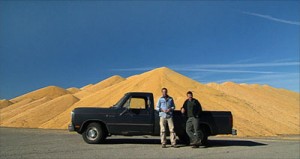 “King Corn,” directed by Aaron Woolf, and “Truck Farm,” directed by Ian Cheney, explore some of today’s most important agricultural issues. The films will be available to online audiences for one month, beginning July 1, at www.dosomethingreel.com. “King Corn” will be available for $5.99 and “Truck Farm” for $4.99. “King Corn” follows Cheney and filmmaker Curt Ellis as they move from Boston to the heartland to plant and grow a bumper crop of corn in Iowa. When the pair tries to follow their successful crop off the farm and into the food system, what they find raises troubling questions about how we eat – and how we farm.
“King Corn,” directed by Aaron Woolf, and “Truck Farm,” directed by Ian Cheney, explore some of today’s most important agricultural issues. The films will be available to online audiences for one month, beginning July 1, at www.dosomethingreel.com. “King Corn” will be available for $5.99 and “Truck Farm” for $4.99. “King Corn” follows Cheney and filmmaker Curt Ellis as they move from Boston to the heartland to plant and grow a bumper crop of corn in Iowa. When the pair tries to follow their successful crop off the farm and into the food system, what they find raises troubling questions about how we eat – and how we farm.
Will Garner
Is a Detroit Urban Farmer who’s bringing food production back to basics – In AMERICA REVEALED “Food Machine.
Chicago Approves Urban Farm and Nature Preserve
 The City Council today approved plans that will enable the development of a North Side nature preserve, a South Side urban farm, and a West Side community garden.”Chicago’s natural areas, whether they’re used for growing food or for recreation, are essential to neighborhood health and well being. These proposals will help reinforce the City’s commitment to improving and expanding these local assets,” Mayor Rahm Emanuel said.
The City Council today approved plans that will enable the development of a North Side nature preserve, a South Side urban farm, and a West Side community garden.”Chicago’s natural areas, whether they’re used for growing food or for recreation, are essential to neighborhood health and well being. These proposals will help reinforce the City’s commitment to improving and expanding these local assets,” Mayor Rahm Emanuel said.
Rosehill Nature Preserve
The nature prserve will be developed on 21 acres of woods and wetlands that will be purchased by the City on the northwest corner of Rosehill Cemetery at 5900 N. Western Ave.To be acquired for $7.8 million, the property will eventually be transferred to the Chicago Park District for public use.The site was never developed for cemetery purposes. It includes mixed woodlands and a seven-acre pond that are identified in Chicago’s “Nature and Wildlife Plan” as forming part of a unique, natural landscape within the Lincoln Square community.
Tax Increment Financing and tax exempt bonds will be used to purchase the property and dredge the pond. Future enhancements will involve new trails and wildlife viewing platforms.
Honore Street Farm
The urban farm will be created through the sale of 10 pacels of City-owned land for use by Growing Home, an organic farming business that provides transitional job training to homeless and low-income individuals. The parcels, located on the 5800 blocks of South Wolcott and Honore streets, will be used by Growing Home to raise organic produce that will be sold to community residents and at farmers markets. The proposed sale price is $1 for all 10 parcels. The NeighborSpace land trust will own the land and Growing Home will manage the property as Honore Street Farm, which will serve as an extension of its nearby Wood Street Farm.
Ujima Garden
The community garden will be developed on one parcel of City-owned land at 545 N. Central Park Ave., which will be used to grow vegetables in raised beds. Plans also call for a walking path, shed, compost bin and rain barrel.The City will sell the 5,900-square-foot site for $1 to the NeighborSpace land trust, which will provide liability insurance for the local Humboldt Park residents that will provide day-to-day upkeep. Residents have named the garden “Ujima,” a swahili term for collaboration. The City’s GreenCorps program will fund the installation and maintenance of the garden as part of an initiative aimed at unifying the community and promoting healthy living.
The City will sell the 5,900-square-foot site for $1 to the NeighborSpace land trust, which will provide liability insurance for the local Humboldt Park residents that will provide day-to-day upkeep. Residents have named the garden “Ujima,” a swahili term for collaboration. The City’s GreenCorps program will fund the installation and maintenance of the garden as part of an initiative aimed at unifying the community and promoting healthy living.
Atlanta Grows Lettuce in Freight Containers as Urban Farms Bloom
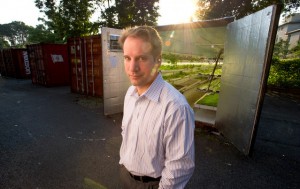 Designer lettuce will soon bud under the flight path of the world’s busiest airport in Atlanta. An orchard is taking the place of a parking lot in Davenport, Iowa. And homeowners near downtown Denver are turning lawns over to farmers like Sundari Kraft, who plant, weed, water and harvest crops from their yards in return for a share of the bounty.
Designer lettuce will soon bud under the flight path of the world’s busiest airport in Atlanta. An orchard is taking the place of a parking lot in Davenport, Iowa. And homeowners near downtown Denver are turning lawns over to farmers like Sundari Kraft, who plant, weed, water and harvest crops from their yards in return for a share of the bounty.
“People are sick and tired of mowing and fertilizing,” said Kraft, author of “The Complete Idiot’s Guide to Urban Homesteading,” in an interview at her Denver home. “We have a stack of applications, enough to double what we do now.”
From New York to Seattle, cities — which the U.S. Conference of Mayors says account for 90 percent of the nation’s gross domestic product — are attempting to create jobs, foster economic development, feed impoverished neighborhoods and fill long-vacant lots by returning to their agrarian roots.
Kraft, 34, and a team of apprentices nurture tomato forests, white eggplants, rainbow chard and other genetically pure vegetables for 11 homeowners who live minutes from downtown. Kraft sells the crop at farmers’ markets and to 30 families, who fork over $450 for a 20-week supply.
The demand for locally grown produce hit a high point this year, fed by urbanites looking to save money as well as documentaries such as “Food Inc.” and books including Michael Pollan’s “The Omnivore’s Dilemma,” which explore industrial food production.
Alaska to Texas
More farmers are marketing their products directly to consumers than ever, the U.S. Department of Agriculture said Aug. 5 when it released its 2011 National Farmers Market Directory. The guide lists 7,175 markets, up 53 percent from 4,685 in 2008. (Bloomberg) –Editors: Mark Schoifet, Stephen Merelman Download the complete article:
Atlanta Grows Lettuce in Freight Containers as Urban Farms Bloom
Seeing Green: The Value of Urban Farms
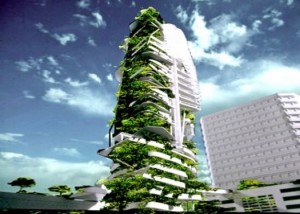 Project by Tyler Caruso and Erik Facteau – Seeing Green: The Value of Urban Agriculture is a year-long research project that will measure the stormwater management potential of two urban farms; Brooklyn Grange (a rooftop farm) & Added Value (raised beds) in NYC.
Project by Tyler Caruso and Erik Facteau – Seeing Green: The Value of Urban Agriculture is a year-long research project that will measure the stormwater management potential of two urban farms; Brooklyn Grange (a rooftop farm) & Added Value (raised beds) in NYC.
Our aim is to create a model for future research that can be replicated anywhere, to help validate and support urban farms. We think policies should be based on scientific study and we want our work to encourage the adoption of supportive incentives and non-restrictive regulations for urban farming.
This is important because farms give us a lot more than just produce- they increase food security, decrease food miles traveled, offer healthy and nutritious produce, create green jobs, improve air and water quality, combat Urban Heat Island effect, create habitat for critters, beautify neighborhoods and many more (feel free to message us we LOVE to talk about this).
This is where you come in- we need your support to do this research- we need to raise $12,000 for the rest of our equipment.
The thing is, we know farms are good but we don’t know exactly how good. There are a lot of skeptics out there that need some convincing. And there is nothing better for combating a nay-sayer than hard data- all decisions in cities are based on numbers.
But how can our research effect policy?
Currently in NYC there is a one-time greenroof tax credit that covers some of the installation costs for a greenroof ($4.50 per sq ft up to $100,000 which goes to the building owner). The language specifies that roofs which require irrigation are ineligible to receive the credit. This means that the credit doesn’t allow for the use of food-producing crops, since these plants need irrigation. The theory behind this was that by using water to irrigate, these roofs would be less effective at retaining stormwater than a traditional greenroof which does not need any irrigation (these are typically planted with sedum or other drought tolerant plants).
However there has been NO scientific study that substantiates this speculation. We actually believe the opposite to be true- we think that by using water intensive plants which also require deeper growing beds, you may see an increase in a roof’s water holding capacity.
This is a clear example of why research like ours is important- because without hard data, misinformation and assumptions about rooftop farms was drafted into legislation. This credit would cover almost half of a developer’s start-up costs for a new 1-acre rooftop farm, which is HUGE. Studies like ours can help inform better policies and incentives, helping to propel the urban agriculture movement.
Why else is this research so important you ask?
Well, cities spend a lot of money to treat stormwater and wastewater, and the way they do this is both energy and money intensive. Wastewater treatment plants in NYC account for 17% of green house gas emissions alone!
NYC and many other major cities across the US and Europe, are having to face the fact that surrounding water bodies (such as the NY Harbor and the Hudson river) are way polluted. A major culprit are combined sewer outflow events (also referred to as CSOs).
NYC has only one system to deal with wastewater which includes stormwater (from buildings’ roofs and streets) and septic waste (from toilets, sinks and showers). During a storm, wastewater treatment plants become overwhelmed by the volume of waste and stormwater causing the plant to dump this combination of raw untreated septic/stormwater directly into surrounding water bodies. This lovely little occurrence is called a CSO event. Over 2 billion gallons of this untreated wastewater is released annually in NYC alone!
What is a solution?:
Urban Farms! These farms provide much needed green space that allows rain to infiltrate the soil, offering a cost effective stormwater solution, and helping to reduce the number of CSO events (which in turn makes our water bodies cleaner).
So, why do we need YOUR help?! To purchase the rest of our equipment- we have already been given a 1/3 of the equipment from two amazing professors at Rutgers. But we need an additional $12,000 to order the rest.
Equipment: $1,000 dataloggers, $3000 flowmeters, $350 windsentry, $500 weather station mount, $2,500 load cells, $1,000 PV panels, $700 moisture probes, $1100 raingauge, $250 sensor shields, $200 cables + terminators, $400 mounting bands $200 batteries, $300 lumber, $250 greenroof materials.
Help support this project here.
DeLoach Vineyards Collaborates with Kingsborough Community College to Build an Urban Farm in Brooklyn
 PRLog – DeLoach Vineyards announced today its collaboration with Kingsborough Community College in Brooklyn, New York to help launch the Kingsborough Urban Farm, the college’s first project of this kind. The project, Build a Garden in Brooklyn, will be integrated into the school’s academic program and will provide students with the opportunity to grow and harvest healthy, organic produce. The new culinary arts program, student-catering firm, and college cafeteria will use the food produced from the Urban Farm to feed and educate students. DeLoach, with its commitment to organic farming and education, was thrilled to contribute to a program that helps create environmental awareness.
PRLog – DeLoach Vineyards announced today its collaboration with Kingsborough Community College in Brooklyn, New York to help launch the Kingsborough Urban Farm, the college’s first project of this kind. The project, Build a Garden in Brooklyn, will be integrated into the school’s academic program and will provide students with the opportunity to grow and harvest healthy, organic produce. The new culinary arts program, student-catering firm, and college cafeteria will use the food produced from the Urban Farm to feed and educate students. DeLoach, with its commitment to organic farming and education, was thrilled to contribute to a program that helps create environmental awareness.
DeLoach Vineyards has long been a leader in sustainable practices, innovative “green” technology, beginning its conversion to organic and Biodynamic® farming practices in 2004. It achieved organic certification from CCOF in 2008 and earned Demeter certification for its Biodynamic vineyard practices in 2009. The 2010 harvest is the first as a Biodynamic-certified estate and the first since the award-winning 2004 vintage (Wine of the Year, Wine Enthusiast). Many years ago, DeLoach converted its winery horse pasture into a half-acre organic and Biodynamic® garden of seasonally fresh produce that DeLoach chefs use to prepare meals for winery visitors and employees year round. In addition, DeLoach emphasizes sustainable farming and the conversion to organic and Biodynamic farming with its grower partners, helping, for example, the Maboroshi Vineyard convert from conventional to Biodynamic practices. Furthermore, DeLoach uses renewable energy, and reduces its water usage through implementation of an innovative membrane bio-reactor that relies on micro-organisms to purify water used in the winemaking process so it can then be used for landscaping and vineyard irrigation, saving up to two million gallons of water per year.
The partnership between DeLoach Vineyards and Kingsborough Community College complements DeLoach’s efforts in farming and gardening, allowing it to help educate a new generation about leading a healthy and sustainable lifestyle. Jean-Charles Boisset, proprietor of Boisset Family Estates, explains the enthusiasm with which DeLoach Vineyards joins this project: “As stewards of the land, our responsibility lies not only in fostering best practices within our own methods, but also in sharing the breadth of our knowledge with our communities. We’re happy to participate in the Kingsborough Urban Farm as it helps educate young people about what we have so passionately believed in for years at DeLoach Vineyards.”
To spotlight this new partnership in the public domain, bottle neckers, made of seed paper with annual and perennial wildflower seeds, will be placed on DeLoach bottles in stores throughout New York City. Beginning in November, $0.50 from every bottle of DeLoach wine sold in the City, up to $5,000, will be donated to help jumpstart the Kingsborough Community College Organic Urban Farm. The sales-focused program will continue to run through January 2011. Stuart Schulman, Executive Director, Center for Workforce Development and Economic Development confirms the benefit of this partnership: “We are very excited about our partnership with DeLoach, a leader in sustainable agriculture. Their support will help us to provide our students with the tools to learn to eat healthier food, live in a more sustainable way, and find new career pathways. Our students in nursing, childhood education, biology, and our new culinary arts program will benefit from having the Urban Farm on campus, and they will take this experience with them as they go out into the workplace.”
Vertical Glass Buildings Could Produce City Food
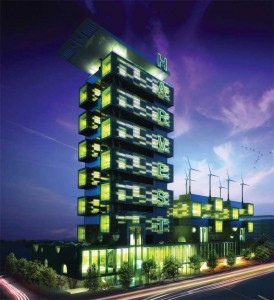 Vertical farming and TerraSphere Systems alternative agriculture are two really wild proposals for feeding the world that could eventually be necessary for feeding a world population that has too few acres for growing food.
Vertical farming and TerraSphere Systems alternative agriculture are two really wild proposals for feeding the world that could eventually be necessary for feeding a world population that has too few acres for growing food.
Both glass building farming systems were outlined at the New York City Agriculture 2.0 Global Investments Conference for agricultural innovators and investors. The attendees of the conference in September were quite different than those attending the Farm Progress Show at Boone, Iowa, at the end of August. At one conference, most attendees thought global warning is a make believe concept, and at the other conference, attendees were positive that changes in global weather are obvious and not a theory. At the farm show, tripling the yield per acre by 2050 was a typical discussion goal, and at the conference, two speakers outlined the goal to find financing for multiple-story greenhouse-type building for growing food crops by 2050 in the middle of cities.
The vertical farming concept was presented by Dickson Despommier who is on a mission to have a tall building constructed in a densely populated urban center. The upper levels of the structure would be the food growth center with air locks and sanitation to keep diseases out so that no pesticides will be needed. The food grown on top would be sold at the first floor street-level market. Despommier’s book, “Vertical Farm: the world is growing up,” is scheduled to be available as of this month. Despommier said the demonstration vertical farm is planned to show how to grow food without commercial fertilizers, not cause environmental impact from pesticides, not have runoffs or erosion and produce crops year round. Despommier has a doctorate in microbiology.
The author also sees that vertical farms would overcome “climate change as our biggest challenge” in food production by 2050. He contends that one indoor acre of food production will equal 10 outdoor acres of production. It also would have food production where 80 percent of the world’s population will live—cities, he claimed. If this all sounds to space age, “Star Trek,” to you, then you probably haven’t heard of TerraSphere Systems, LLC., which is already designing and planning large-scale vertical growth systems. Their first smaller-scale facility is operating in Vancouver, Canada.
It was announced at the Agriculture 2.0 conference that he company was expected to be acquired by Converted Organics, subject to board approval. Converted Organics’ main business is converting food waste into organic fertilizer. The acquisition will not reduce the TerraSphere Systems’ need to raise money from investors, which will be paid off from licensing fees and royalties plus sale of equipment and technology. The Agriculture 2.0 conference also opened my eyes to the number of agricultural companies looking for “socially conscious” investment—investment made without the investor earning a high level of return to assist not-for- profit companies working in undeveloped countries.
The photos of agricultural production by the rural poor in countries where the income for a family is equivalent to $1 per day are astonishing. There are still costs to assist farmers to transition from using ancient crop production. There is not enough money available to give away technical advancements to all backward farmers. But farmers paying minimally for simple technology isn’t possible without some type of financing. An example is $150 per acre for low-tech drip irrigation. The $150 is about half the yearly income of those poor farmers, but return on the $150 has been shown to quadruple the return on investment with higher food production in the first year. Then to earn money from the additional production buyers and sellers have to come together so that there are markets for the new production.
Hearing speakers at such conferences talk about farming techniques that quadruple production on one-acre farms still leaves me wondering if those types of improvements will really have us in a place of not needing seven-story glass farms by 2050. Many technology-based agricultural leaders and companies of the world claim that food needs will be met by the most advanced farmers (those of the United States and a few other countries) as they triple production per acre. I’ll be amazed if that happens, but I have been amazed with many of the changes in agriculture during the last 30 years. Richard Keller, AgProfessional editor
NYC Farm School and everything
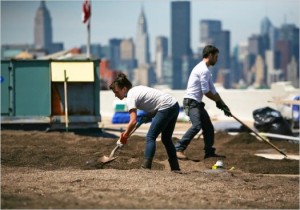 Just Food and an alliance of local horticultural and food justice organizations are pleased to announce the official launch of Farm School NYC: The New York City School of Urban Agriculture. The school will offer a unique, community-based certificate program with enrollment beginning in January 2011. The mission of the school is to provide comprehensive professional training in urban agriculture, while spurring positive local action on issues of food access and social, economic and racial justice.
Community gardens and urban farms throughout the city will serve as outdoor classrooms, and their neighborhoods and gardeners as inspiration for a vibrant, fair local food system that nourishes bodies and minds.
Just Food and an alliance of local horticultural and food justice organizations are pleased to announce the official launch of Farm School NYC: The New York City School of Urban Agriculture. The school will offer a unique, community-based certificate program with enrollment beginning in January 2011. The mission of the school is to provide comprehensive professional training in urban agriculture, while spurring positive local action on issues of food access and social, economic and racial justice.
Community gardens and urban farms throughout the city will serve as outdoor classrooms, and their neighborhoods and gardeners as inspiration for a vibrant, fair local food system that nourishes bodies and minds.
Training programs will be accessible to adults of all educational backgrounds and income levels. In particular, Farm School NYC targets New York City residents unable to access traditional agricultural education and for whom skills in urban food production can contribute to reduced hunger and diet-related diseases that disproportionately affect low-income city residents. ”For the first time, New Yorkers and city dwellers from all over will have access to agricultural training that directly relates to the unique setting of urban agriculture,” says Karen Washington, a nationally-recognized urban farming pioneer from the Bronx, and a member of the school’s Executive Board. “We grow it so we know it, and we’ve shown that city farming can make a huge difference in the health and nutrition of low-income urban communities. Just Food
